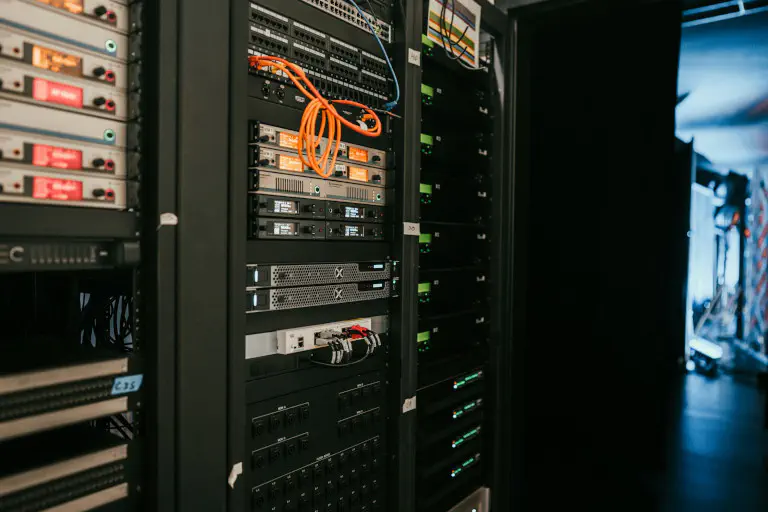What is digital sovereignty? #
Digital sovereignty is the ability of companies, individuals or states to act autonomously in a networked world. In addition to digital competence, the term encompasses control over the entire digital infrastructure required for technological sovereignty. The main objectives can be summarized as follows:
- reduce dependence on individual providers and products
- ensure a secure, functioning and available IT infrastructure
- maintain the ability to act and remain competitive in the course of digitalization
- adhere to all applicable compliance regulations, in particular data protection
What is data sovereignty? #
Data is collected, processed or transmitted in almost all digital processes. An important part of digital sovereignty is therefore data sovereignty. In EU countries, it is defined in accordance with the GDPR:
- self-determination over the storage, transfer and use of one’s own data
- protection against unauthorized access by third parties, e.g. foreign authorities and intelligence services
- the protection of personal health, financial and master data, e.g. of employees or customers
Data autonomy means the absolute power of disposal over the storage, transfer and use of your data. This can usually only be achieved with your own IT infrastructure, as most providers collect certain data to personalize and improve their services.

The advantages of digital sovereignty #
Digital sovereignty has advantages in the following respects:
Technological independence
Control over infrastructure
Strategic competitiveness
Data protection and democracy
Compliance (e.g. GDPR compliance)
How digital dependency comes about #
Smooth operational processes are hardly possible without a functioning IT infrastructure consisting of hardware and software. However, developing your own technologies, systems and platforms requires enormous investment and expertise, meaning that smaller countries and companies can only manage this in cooperation and have to rely on foreign partners. For example, Great Britain and other European countries have made themselves dependent on the USA for decades, have not promoted the development of their own technologies enough and have only recently started to do more for their digital sovereignty. As a result, companies in Europe have few providers and products to choose from that are independent of foreign players.
Companies are often tied to individual providers such as Google or Microsoft for a long time – be it e-mail services (e.g. Gmail, Outlook), cloud storage (e.g. Google Drive, OneDrive) or entire workspaces or operating systems. Employees get used to the software, internalize how to use it and adapt their processes accordingly. This leads to the so-called lock-in effect, which makes it difficult to switch to other providers or products and would result in high costs. A good example of this is Apple’s closed ecosystem, which deliberately restricts compatibility with other devices and systems. Once introduced, it becomes cumbersome and expensive to switch.

The trend from local storage to the cloud is also ensuring that more and more data is located in data centers and thus in the hands of US technology companies such as Microsoft, Apple, Google or Amazon. The currently booming AI assistants (e.g. ChatGPT, Copilot) are also forwarding requests to their parent companies. As the data in these cases not only leaves your company, but often also the European Union, this may violate the GDPR. The global flow of data makes it more laborious to understand where data is stored at any given time and which data protection laws apply. This makes it increasingly difficult for companies to guarantee data protection in accordance with national and international regulations.
How you can protect your data with sovereignty #
The General Data Protection Regulation (GDPR), which came into force in 2018, is a milestone for data sovereignty within the EU. At an individual level, it gives you the right to know who is using your data, for what purpose and how it is stored. On the other hand, companies must of course ensure the protection of personal data (e.g. of employees or customers).
In contrast to this is the Cloud Act – a US law from 2018 that allows US authorities to access data on platforms of US technology companies, even if it is stored outside the USA. Large providers such as Microsoft, Google and Amazon are particularly affected. If you use cloud services from the USA, you must therefore be aware that US authorities have access to the data, even if it is physically located in Europe. This is precisely where the connection between digital dependency and data sovereignty becomes apparent.
In order to respect the GDPR, the storage and processing of personal data with European providers is recommended. Only these represent a legally compliant alternative to platforms from other countries. For complete data sovereignty, you nevertheless need your own infrastructure.
How to realize your data sovereignty #
-
Clarify data residency: Determine where (in which country or jurisdiction) you want to store your data and which data protection regulations apply at the chosen location.
-
Develop data governance: Consider how you can collect, store and transfer data in a legally secure manner. Your data governance should also regulate who is allowed to see and process which data.
-
Choose the right infrastructure: Choose systems and platforms that allow you to maintain transparency and control over your data and ensure compliance.
-
Train employees: Compliance is not just a technical challenge. Your team members should know and understand the rules (your data governance) so that they adhere to them in everything they do.
-
Conduct regular audits: As data protection laws change and rules can be forgotten, organizations need to continually review compliance.
Sectors where digital sovereignty is essential #
Digital sovereignty is particularly important when it comes to sensitive data that must not fall into the wrong hands. This can range from medical reports from a doctor’s surgery to construction plans for tanks from a defense company. This becomes even clearer when you consider that the failure of IT systems can paralyze entire companies. Digital sovereignty and digital resilience are therefore closely linked.
Digital resilience refers to the ability to maintain business operations in the event of IT disruptions or cyber attacks or to resume them as quickly as possible. This digital resilience is essential in order to be prepared for threats, respond to incidents and minimize their impact.

Critical infrastructure companies in particular must ensure that their IT is resilient, as their failure would pose significant risks to the functioning of society. They are also the focus of potential acts of sabotage. For example, cyberattacks in September 2025 led to the failure of IT systems at several European airports. Attacks on the IT infrastructure of hospitals, banks, power plants and defense companies are also no longer a rarity. The areas with the highest risk include
- Public administration
- Healthcare
- Finance
- Energy & Utilities
- Defense & Armaments
- Transportation
Technologies for more digital sovereignty #
Your digital sovereignty starts with recognizing technological dependencies, weighing up alternatives and ensuring a secure IT infrastructure. Three technologies are predestined for this:
Open source software #
With open source software, the source code is publicly accessible: you can usually use the software at low cost or free of charge, operate it yourself and adapt it as you wish. The use of open source technologies avoids the lock-in effect – i.e. dependence on a specific provider, product or license model. This allows companies to retain full transparency and control over their systems. This is a decisive advantage over proprietary systems, where you are dependent on one manufacturer, do not know the code and therefore run risks such as hidden data outflows and security gaps.
Sovereign cloud #
A sovereign cloud is a special form of cloud operation that guarantees a high level of security, data sovereignty and compliance. Both the data residency and the cloud infrastructure and provider are located in a specific region in order to comply with local data protection laws, prevent access by foreign actors and ensure that the data remains in the relevant jurisdiction. A sovereign cloud usually relies on open source technologies and interoperability to make it easier to switch to and integrate with other systems. This makes it possible to avoid excessive dependence on the provider and establish extensive data sovereignty.
On-premises solutions #
With on-premises solutions, you operate your IT systems on your own servers or even in your own data center. In contrast to cloud services from external providers, you own the infrastructure, giving you direct, physical control: Your data is stored on site, you determine the level of security and can implement strict compliance and data protection guidelines. This minimizes risks with regard to foreign laws (e.g. US Cloud Act) and unauthorized access. However, data sovereignty comes at a price – because having your own infrastructure requires considerable investment and expert personnel .

Achieve digital sovereignty with SeaTable #
The SeaTable no-code platform allows you to create your own databases, applications and automated processes without any programming knowledge. You are free to choose how much digital sovereignty you want to have:
-
With SeaTable Cloud , you benefit from the scalability and convenience of our cloud. You don’t need your own infrastructure and are ready to go straight away. All data is stored in GDPR-compliant German data centers.
-
With SeaTable Dedicated we operate a sovereign cloud for you on dedicated servers in secure German data centers. You determine the configuration of your system, but do not need your own infrastructure.
-
For SeaTable Server you need your own infrastructure. With an on-premises installation, you have full data sovereignty and control and can configure your system entirely according to your needs.
Conclusion: Make yourself digitally independent #
The digital transformation is progressing rapidly – with artificial intelligence, automation and quantum computing. But the more digitalization determines our everyday lives, the more important it becomes who has control over these technologies. Without digital sovereignty, companies and states are putting their ability to compete and act at risk in the long term. That is why they should not relinquish control of IT and data and actively shape the digital transformation.
FAQ about digital sovereignty #
What is digital sovereignty?
What is the difference between digital sovereignty and data sovereignty?
Is digital sovereignty good for compliance?
How are data residency and data sovereignty related?
In which areas is digital sovereignty particularly important?
TAGS: IT Security & Data Privacy Digital Transformation Public Sector
